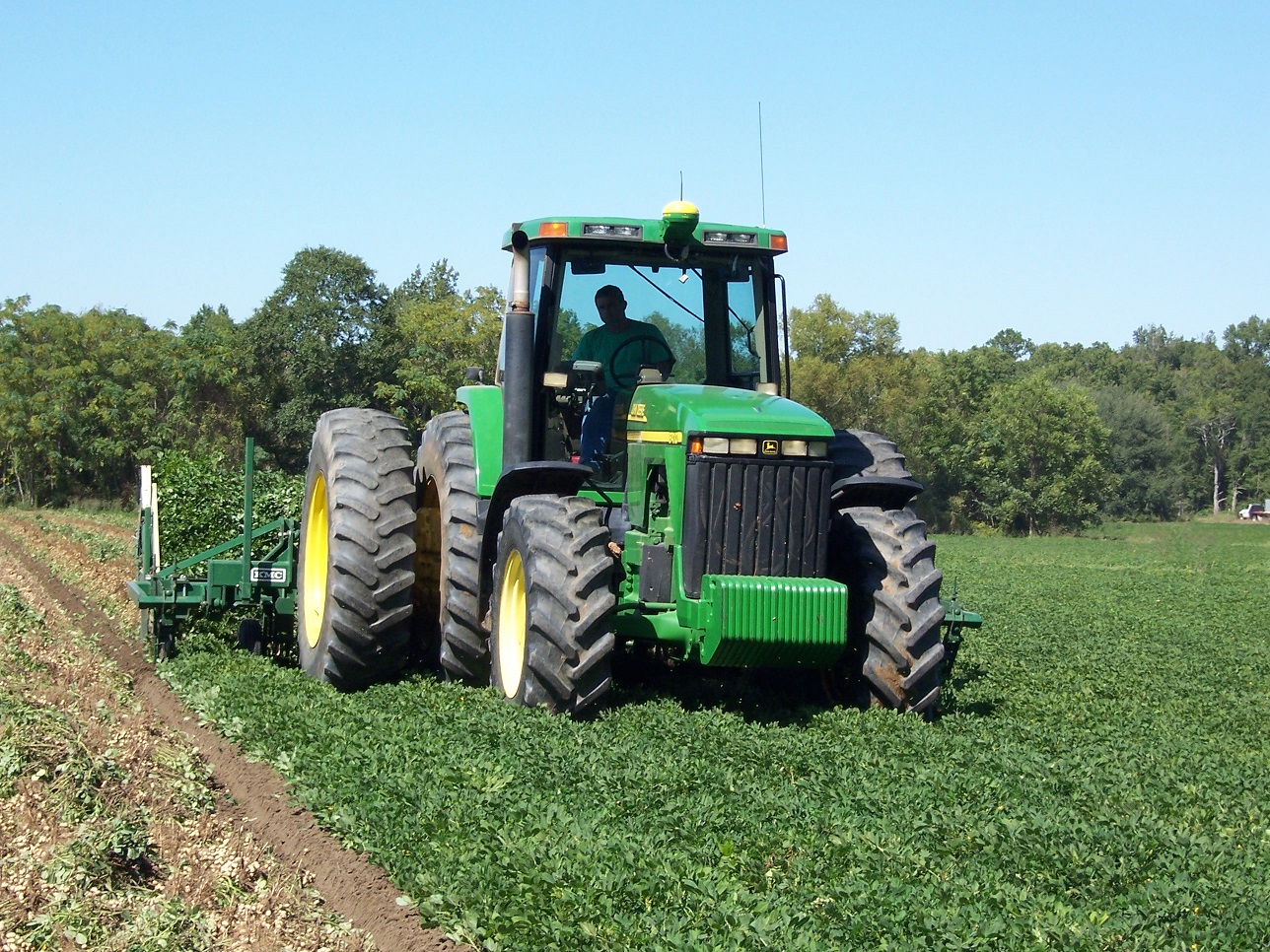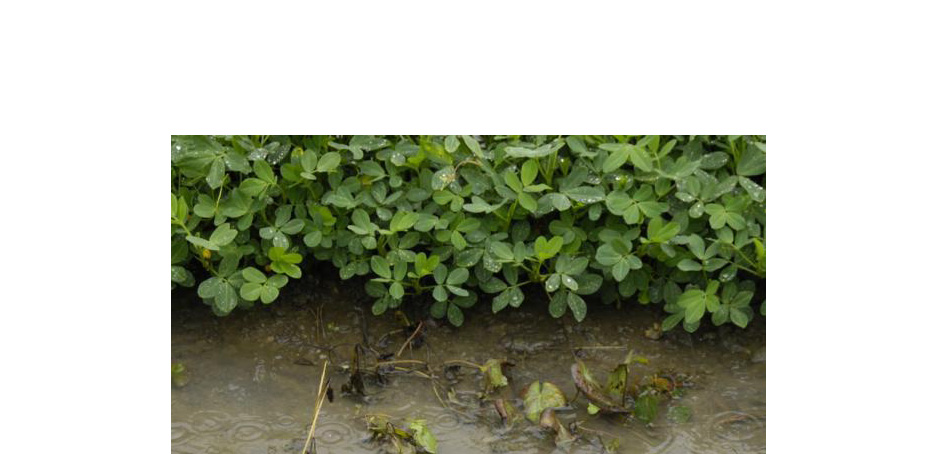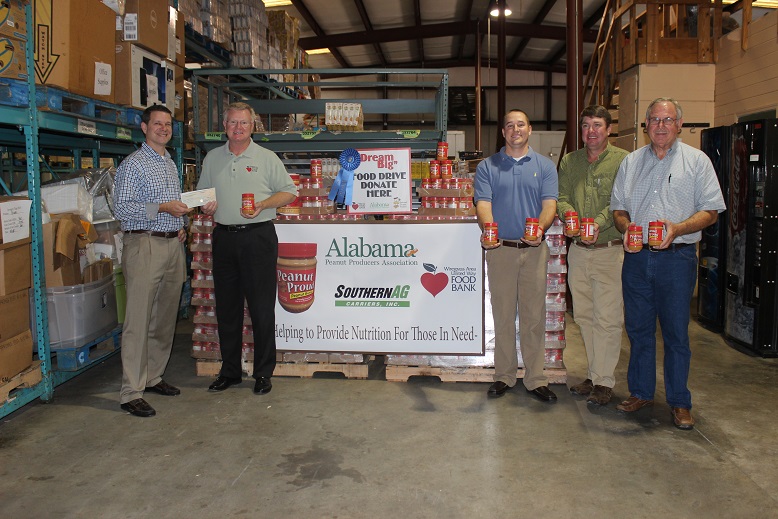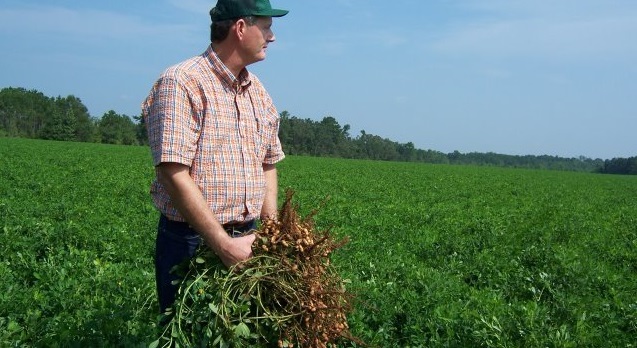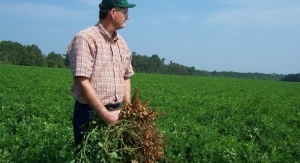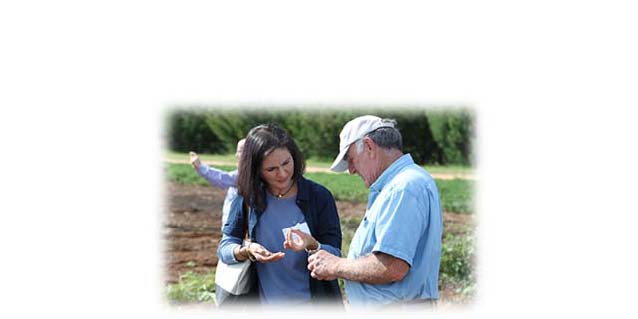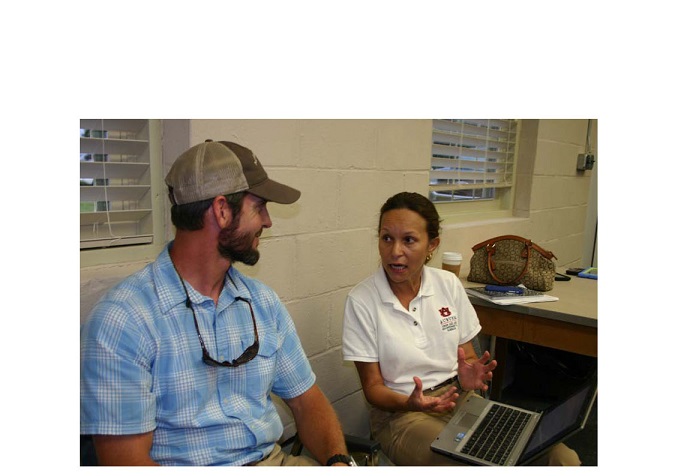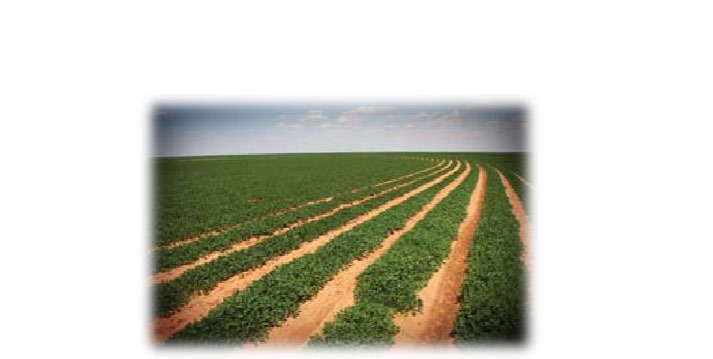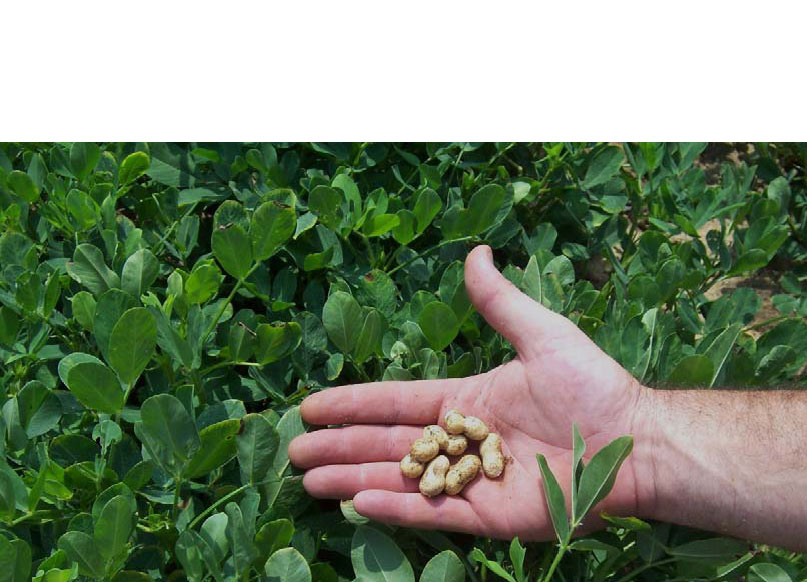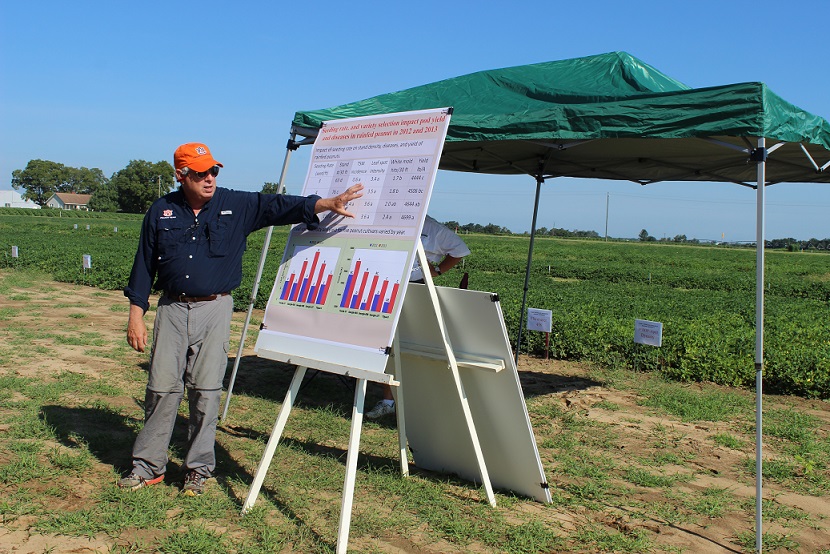AUBURN, Ala.—One of the strongest El Niño climate phases in decades has been building for several months and could make for a tricky fall harvest in Alabama and the lower Southeast.
Row crop farmers preparing for harvest should think in terms of “the sooner the better,” said Auburn University researcher Brenda Ortiz, an associate professor in the College of Agriculture’s Department of Crop, Soil and Environmental Sciences. A primary focus of Ortiz’s research is the impact of weather and climate on agriculture.

Brenda Ortiz, associate professor in the Auburn University College of Agriculture’s Department of Crop, Soil and Environmental Sciences, is shown discussing the fall climate forecast with regional Extension agent Tyler Sandlin at the Agronomic Field Day held recently at the Gulf Coast Research and Extension Center in Fairhope.
“The strongest El Niño on record occurred in 1997, and the one forecast for this year could top that,” she said, noting that climate prediction models forecast an all-time record El Niño October, November, December and January.
“There have been indications since this past spring—based on climate models and sea-surface temperatures in the Pacific Ocean—that we are entering an El Niño climate phase, meaning a cooler and wetter fall and winter (in Alabama),” said Ortiz, whose research explores how rainfall and temperature affect crop yields by influencing plant growth and development rates, in addition to pest and disease dynamics. “The sea-surface temperatures in the Pacific have to be warmer than normal, and that’s the main indication of changes toward the El Niño phase.”
All signs point to one of the strongest El Niño’s in recent years, she said. But knowing what’s in store for the coming months can help farmers prepare for the worst.
“Producers may want to schedule to have extra equipment on hand, and they’ll want to get into their fields as quickly as possible to harvest peanuts and cotton this fall,” Ortiz said. “They might see significant yields losses if they delay harvesting. It also could prove challenging to find a suitable window of good weather to dig peanuts and defoliate cotton prior to harvest.”
These weather conditions also will have an impact on planting wheat and other cover crops.
“I’d recommend growers plant their wheat and cover crops as early as possible this fall because field conditions will get wetter the further along we go into the year,” she said. “If it’s too wet, getting a good stand could become an issue. Growers might have to increase their seeding rates for these crops to compensate for stand loss.”
Few things affect farmers more than the weather, said Alabama Farmers Federation’s Brian Hardin, noting dry conditions help at harvest, but rain is important for farmers planting fall crops and it could help farmers down the road.
“Several areas of the state have been suffering from moderate drought conditions, so rain will help recharge those surface water sources,” said Hardin, director of the Federation’s Department of Governmental and Agriculture Programs. “Water is important for farmers who want to irrigate crops next spring and summer and for cattlemen who need moist soil for winter forage.”
El Niño, La Niña and Neutral are the three climate phases of ENSO, the El Niño–Southern Oscillation, Ortiz said. In the Southeast, ENSO affects rainfall and temperatures during fall, winter and spring, with an El Niño occurring every two to seven years.
Winters and springs are wetter and cooler than normal in El Niño years but drier and warmer than normal in La Niña years.
One doesn’t have to look too far back in history to see when a strong El Niño severely impacted fall harvest and planting activities, Ortiz said.
“In the fall of 2009, farmers in the Southeast had many difficulties harvesting peanuts and cotton, and some cotton was even harvested the following January,” she said.


